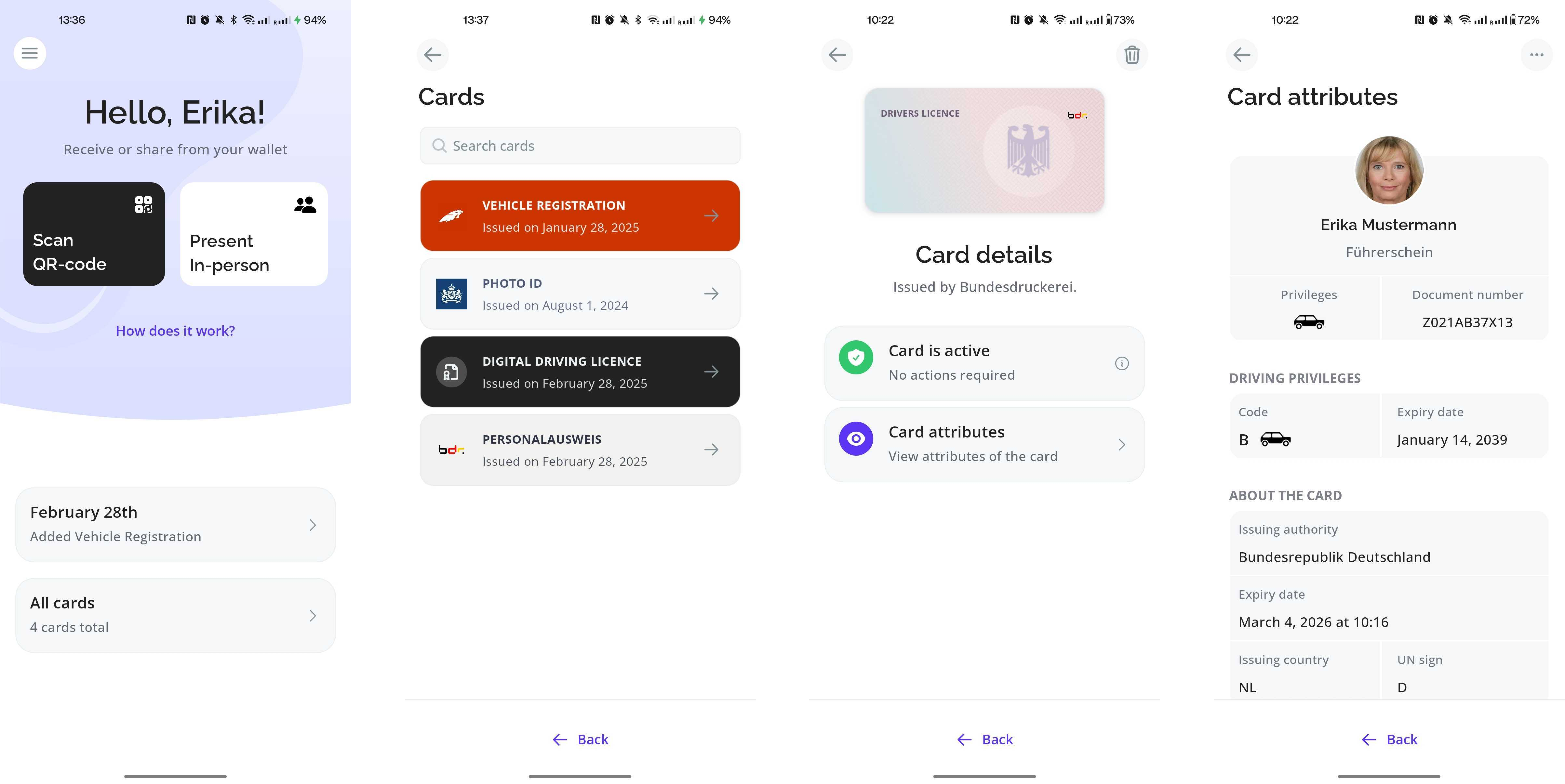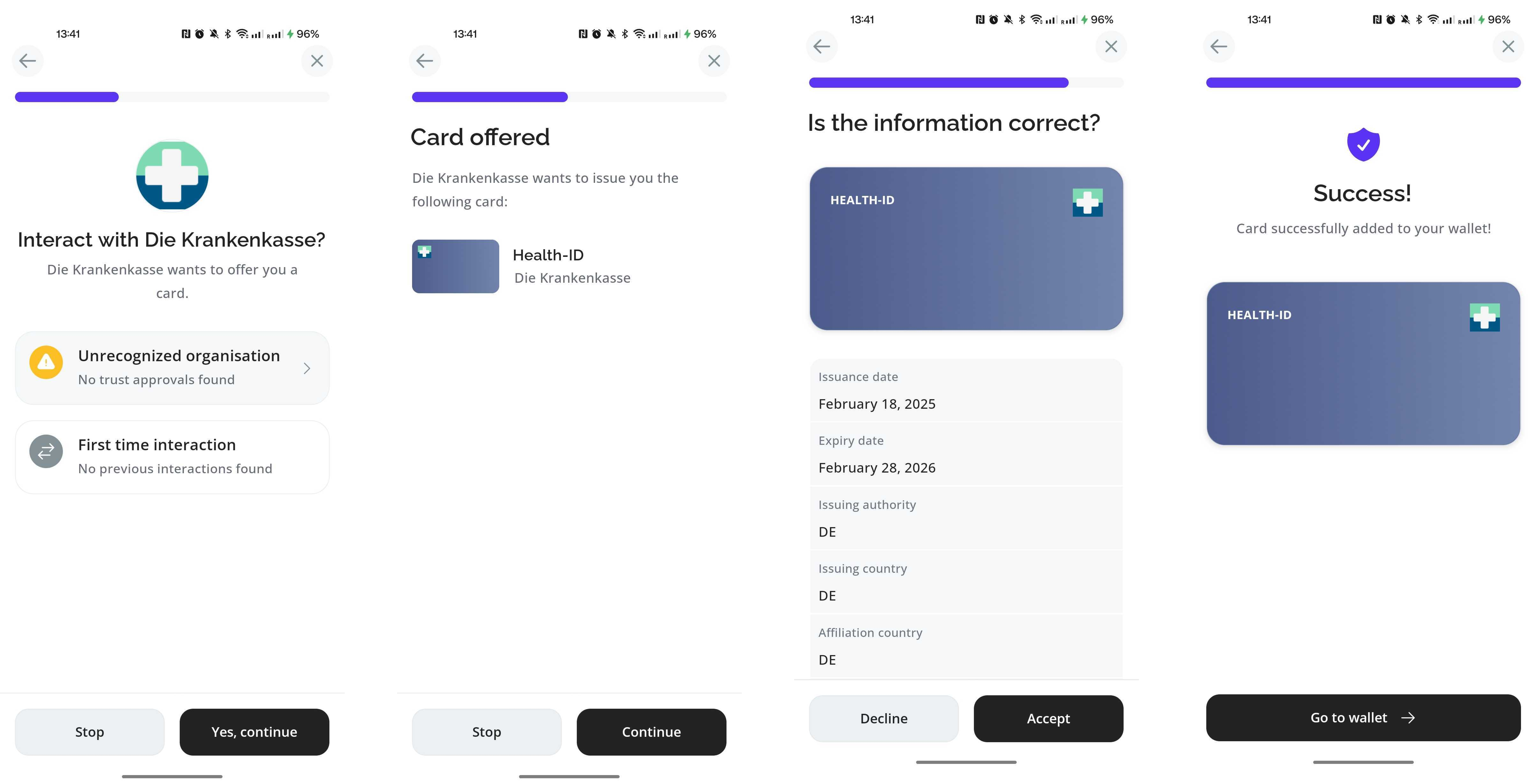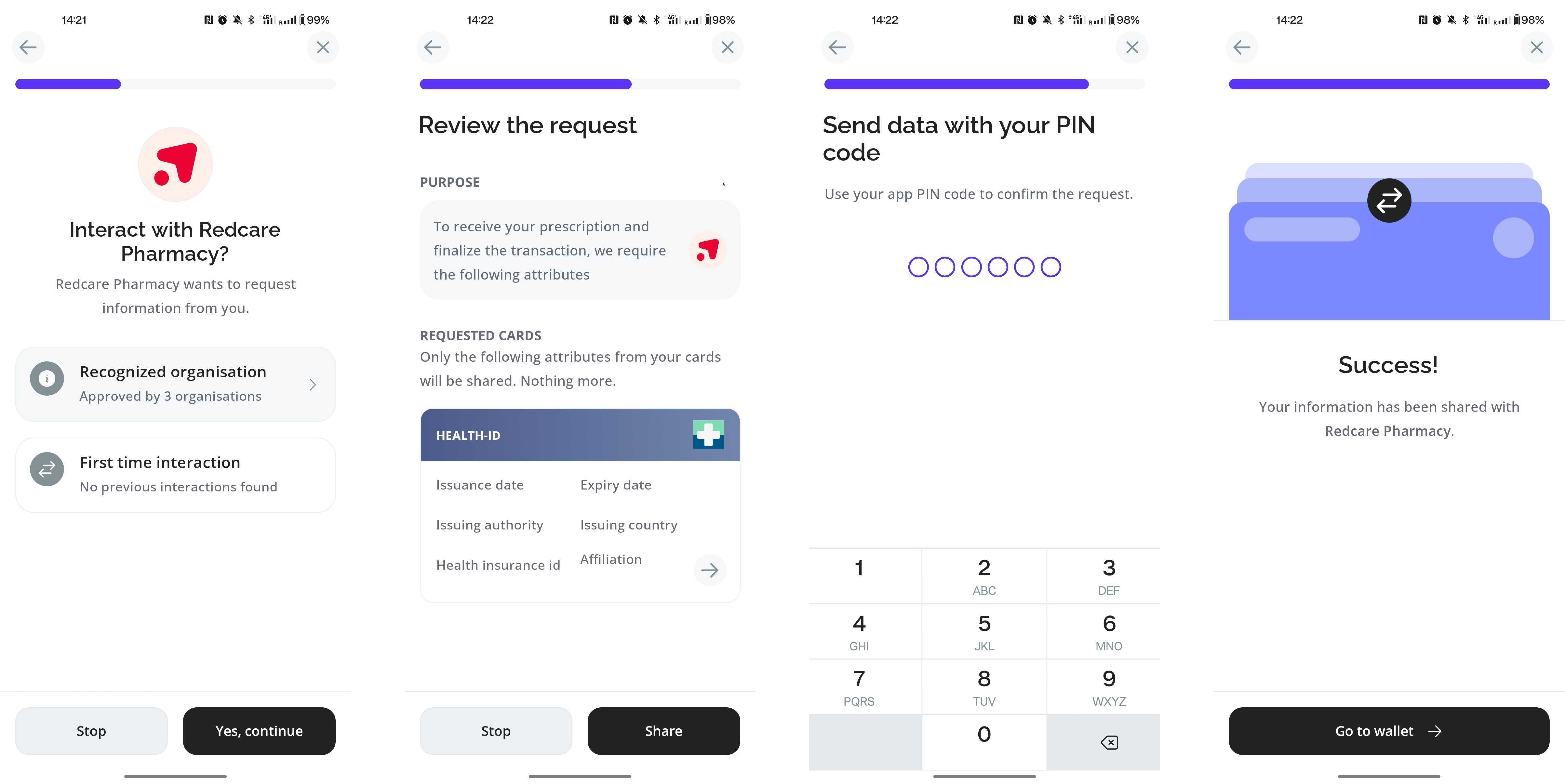Animo Solutions, the team behind Paradym, has been participating in the innovation competition led by the German Federal Agency for Disruptive Innovation (SPRIND), to build an EUDI Wallet prototype. But not just any EUDI Wallet Prototype, the goal is to build the most trustworthy, user-friendly, and universally applicable European Digital Identity Wallet for users in Germany! The prototype is used to lead the way for the German wallet development team, and tackles out-of-the box innovations as well as practical implementation challenges.
The wallets must comply with EU regulations, following the Architecture Reference Framework and the German Architecture Concept, while also demonstrating interoperability with one of the Large Scale Pilots—specifically the Potential LSP. The Paradym team has already successfully navigated Stage 1, centered around the PID, and Stage 2, centered around User Experience and (Q)EAAs. While we're currently working on some exciting innovations in Stage 3, like supporting zero-knowledge proofs, EUDI payments, and Qualified Electronic Signatures for document signing, the results of Stage 2 warrant a closer look!
Did you know: the Dutch government is very public in developing their EUDI wallet 'the NL Public Reference Wallet'. This project features some incredible UX/UI choices that showcase what a government led wallet can look like. The first iteration of our SPRIND EUDI Wallet Prototype was heavily influenced by the great work done by the NL Wallet team.
The EUDI Wallet Prototype is built from the Paradym wallet and designed to integrate seamlessly with the Paradym platform, demonstrating full interoperability with EU standards and regulations. The wallet can be downloaded directly from the App or Play store, used as an open-source base for a wallet, or whitelabeled for your use case.
Home screen and viewing existing credentials
The home page features a welcome message, where the name is derived from the PID that was set-up during onboarding. The focus of the home screen is to give someone two main actions, to scan a QR, or to present a QR. These align with the two ways that you can start an identity verification from the app. If the verification flow starts from the device, for example when a deeplink is clicked, the request will open directly in the app.

On the home page, you can also see an overview of the credentials you currently have in your wallet. These are condensed to make it easier to filter through them, even though an end-user would not have many reasons to go looking through their own credentials. The card list, leads to a card view with general information about the card, and then to a detail view with the actual information. It is good practice to hide away the actual values a bit, as we want to prevent identification through showing the screen, and promote identification through digital requests.
The card example in these screenshots is a mobile drivers license, which has a specialized UI to show the driving privileges.
Receiving new credentials
Although the options of the identity wallet seem varied, in practice a user is always either offered a credential, or requested credential information. Below you can see the proces in our EUDI Prototype wallet for receiving a credential. The user is shown information relating to trust (in the future this will be dependent on the Pan-European trust framework) and is offered the credential to either accept or decline.

Getting a verification request
Receiving a verification request is very similar as far as the flow is concerned. The user reviews the party and any available trust information, and then reviews the request. The request shows the purpose the party gave, as well as the specific data they are requesting. The user confirms with their app code and can share the data successfully with the relying party.

Viewing past interactions
At any point the user of the identity wallet can look back at previous interactions, both successful and unsuccessful. Showing all previous activity sorted by date enables the user to track what information has been received or requested, but can also be very helpful in customer service processes and fixing issues.

While the SPRIND competition is ongoing, the EUDI Prototype wallet will be iterated on with new innovations in this open-source repository. After the project the Prototype will be updated and maintained as the Paradym Wallet, it will remain free and open-source.
Are you interested to prototype your EUDI solution? Reach out to us to use the Paradym EUDI Wallet Prototype or to set up a whitelabel solution.

